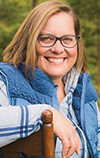As the dairy industry embraces automation, there is a shift to move calves indoors rather than house them outside in hutches.
When moving calves into calf rooms or barns, the first question should be whether calves will be housed in groups with automated feeders or in individual pens with traditional nipple bottles.
Both systems can work, but their success depends largely on the management and calf care team’s values and the allocation of resources. This article will focus on the factors and benefits behind choosing automated calf feeding.
Research and on-farm experience shows that automated calf feeders can be successful. Automated feeders provide the ability to feed calves a larger volume of milk per day, in smaller meals, several times per day.
They also allow calves to be housed in groups, which has proven benefits to welfare and calf behavior as well as growth. However, the decision to switch to automation should be made on a farm-to-farm basis, and the following factors should be considered:
1. Discuss the shift in work
The ultimate goal when choosing automation is to shift calf caretaker work from mixing and delivering milk or milk powder to monitoring calves.
If automated calf feeding is viewed as a means to spend less time with calves, and workers are not skilled at monitoring calves, success with feeders will inevitably be compromised. In addition, teams working directly with calves should be involved in the decision to switch to automated feeding.
Having the key decision-maker come from outside of this group can lead to dissent and start the project out on the wrong foot.
2. Build the right facility
The facility the calves are housed in is an often-overlooked aspect of automated calf feeding. Whether renovating or building a new facility, it is important to remember that the basics for feeding calves still apply.
Clean, dry bedding is imperative for group-housed calves. As such, barns should be designed to allow for plenty of space for calves as well as easy access for cleaning.
Ventilation when housing calves indoors continues to be a significant challenge and, depending on the region, different systems are promoted. Positive-pressure calf barns have become popular in some regions, but these systems are continuously evolving as new techniques become available.
Most challenges occur in the fall and winter, as four air exchanges per hour should occur at the calf level, and it is often difficult to achieve this with cold temperatures outdoors. To see if a ventilation system is working properly and is adequate for the barn, have a company “smoke” the calf area in the winter.
The smoke is representative of the bacteria or viruses and ammonia in the atmosphere. The smoke should be cleared by fresh air within 15 minutes.
If not, the ventilation system is not adequate, creating a higher risk for respiratory issues. If possible, try this smoke test on a working farm or farms in the winter before selecting a ventilation system. This could help you in selecting the right ventilation system for your calf barn.
3. Determine feeding amount and type
It is important to have a clear understanding of how much and what you want to feed your calves. This decision should involve the nutritionist, veterinarian and herd management support team. Furthermore, if a farm has experience with 2 liters (about 2 quarts) twice a day and wishes to feed calves this way, group housing and automated feeding should not be considered.
Feeding a low level of milk can result in calves occupying the feeder, cross-sucking and increased competition in the group. An adviser knowledgeable in calf nutrition should be consulted to ensure that the dry feed provided complements the milk feeding program for optimal calf performance.
4. Choose the right team
When implementing automated feeders, it is vital to ensure you have a skilled team in place to support you through the implementation process.
This team includes a distributor who is knowledgeable in calf feeding and feeder function, and ideally has access to a herd management person to help facilitate the sharing of information among everyone, from the veterinarian to the feed adviser, to the technician, in order to properly fine-tune the feeder.
In other words, this person should effectively connect all players and aspects of management to give calves a healthy start before being introduced to the feeder.
Calf management begins with dry cows and colostrum management, two factors that can heavily impact the success of calves on an automated feeder.
From there, this person should be able to aid in feeder function and provide you with tips to ensure it is working properly. Finally, the distributor should be aware of your expectations and know how to align them with the abilities of the feeder.
There are many good reasons to go to automated feeding, but doing your homework and having a quality support team is crucial. In all cases, a follow-up should be done to ensure the feeders are working properly to optimize calf performance. PD
Nancy Charlton is a dairy adviser for robotic solutions with DeLaval North America. Jennifer Haisan is a research coordinator with the University of Alberta. Michael Steele is an assistant professor of ruminant nutrition at the University of Alberta. Email Michael Steele.
PHOTO: By staff.









